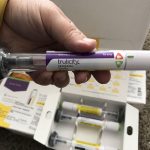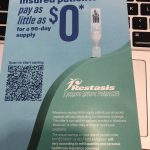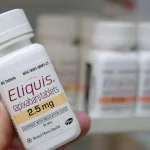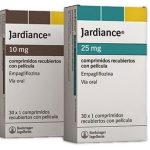Is There A Cheaper Alternative To Xarelto?

The rising cost of anticoagulant medication has become a major concern for patients, healthcare providers, and insurance companies. Anticoagulants are used to prevent blood clots and reduce the risk of stroke and other complications in patients with certain medical conditions such as atrial fibrillation, deep vein thrombosis, and pulmonary embolism. However, the cost of these medications has been increasing steadily over the past few years, making it more difficult for patients to afford and access the treatment they need.
One of the main factors contributing to the rising cost of anticoagulant medication is the high cost of research and development. The development of new anticoagulants involves extensive clinical trials and research, which can be very expensive. The cost of this research and development is passed on to patients in the form of higher drug prices. Additionally, some anticoagulants are relatively new to the market and have not yet been fully embraced by insurance companies, which may limit coverage and increase out-of-pocket costs for patients. This can make it difficult for patients to access the medication they need and may result in delayed or inadequate treatment, leading to potentially serious health consequences. In this article, we shall be taking a good look at the cost of Xarelto treatment and possible alternatives.
What is Xarelto?
Xarelto (rivaroxaban) is an anticoagulant medication used to prevent blood clots and reduce the risk of stroke in patients with certain medical conditions, such as atrial fibrillation, deep vein thrombosis (DVT), and pulmonary embolism (PE). It is also used to treat DVT and PE, as well as to prevent DVT and PE from recurring.
Xarelto works by inhibiting a key factor in the blood coagulation process called Factor Xa, which helps prevent the formation of blood clots. Unlike other anticoagulants such as warfarin, Xarelto does not require routine blood monitoring or frequent dosage adjustments.
Xarelto is available in tablet form and is usually taken once a day with or without food. The dosage and duration of treatment depend on the patient’s medical condition and individual response to the medication. Xarelto should be taken as prescribed and patients should not stop taking the medication without first consulting their healthcare provider.
While Xarelto is generally considered safe and effective, there are some potential side effects and risks associated with its use. The most common side effects include bleeding, including gastrointestinal bleeding, nosebleeds, and bruising. In rare cases, Xarelto may cause serious bleeding, which can be life-threatening.
Why is Xarelto Expensive?
One reason why Xarelto is expensive is that it is a relatively new medication that was approved by the US Food and Drug Administration (FDA) in 2011, which means that it is still under patent protection. As a result, the manufacturer, Bayer, has the exclusive right to produce and sell Xarelto, which allows them to set the price. Another reason why Xarelto is expensive is that it is a complex medication that requires significant research and development, clinical trials, and regulatory approval. The cost of these processes is factored into the price of the drug.
Additionally, Xarelto is a high-demand medication that is used by millions of people around the world, which allows Bayer to charge a premium for it. Insurance companies and other payers are often willing to pay the high cost of Xarelto because it is a highly effective medication that can prevent serious and potentially life-threatening conditions.
How Much Does Treatment with Xarelto Cost?
The cost of Xarelto treatment can vary depending on a number of factors, including your location, your insurance coverage, the dosage prescribed by your healthcare provider, and the length of your treatment.
Without insurance, the average retail price of Xarelto can range from around $500 to over $1,000 per month for a 30-day supply of the medication, depending on the dosage. However, many people are able to obtain Xarelto for a lower out-of-pocket cost through their insurance.
If you have health insurance, your out-of-pocket cost for Xarelto will depend on your specific insurance plan. Some insurance plans cover the full cost of the medication, while others require you to pay a copay or coinsurance. Additionally, some plans may require you to try other medications before Xarelto is covered, or may have quantity limits or other restrictions on coverage.
It’s important to talk to your healthcare provider and insurance company to determine the cost of Xarelto for your specific situation. They may be able to provide you with more information about your coverage and any available cost-saving options, such as patient assistance programs or coupons.
Is There A Cheaper Alternative To Xarelto?
Yes, there are several cheaper alternatives to Xarelto (rivaroxaban), these alternatives are typically known as generic versions of the medication or other brands that contain the same active ingredient, rivaroxaban.
Some examples of cheaper alternatives to Xarelto include:
• Apixaban (Eliquis)
• Dabigatran (Pradaxa)
• Edoxaban (Savaysa)
However, it is important to note that while these medications may be cheaper, they may not be suitable for everyone. It is always recommended to consult with a healthcare provider to determine the best course of treatment for your specific medical needs.
What Are The Available Discount Programs For Xarelto?
There are several discount programs available for Xarelto (rivaroxaban) that may help reduce the cost of the medication for eligible patients. Some examples of these programs include:
1. Xarelto Carepath Savings Card: This program provides eligible patients with a savings card that can be used to reduce the cost of their Xarelto prescriptions to as little as $10 per month. The card is available to patients with commercial insurance and those without insurance.
2. Medicare Part D Extra Help: Medicare beneficiaries who have limited income and resources may qualify for extra help paying for their prescription medications, including Xarelto. Eligible patients may receive assistance paying for the monthly premiums, annual deductibles, and coinsurance for their medications.
3. Patient Assistance Programs (PAPs): Xarelto’s manufacturer, Janssen Pharmaceuticals, offers a patient assistance program that provides free medication to eligible patients who meet certain income and insurance requirements.
4. State Pharmaceutical Assistance Programs (SPAPs): Some states offer assistance programs to help eligible residents pay for their prescription medications, including Xarelto. These programs vary by state and have different eligibility requirements.
It is important to note that eligibility requirements and availability of these discount programs may vary, and patients should consult with their healthcare provider or pharmacist to determine which program may be right for them.





